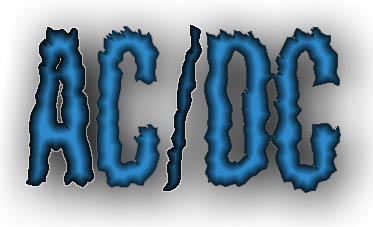

There is a current beginning to flow through Canada, and I don't mean the air stream, this current is electric, I'm referring to Electric Ice Resurfacing Technology of the mid 90's. The concept is not entirely new, as the Zamboni Corporation under the direction of its' founder Frank J. Zamboni Sr. introduced the first model (the 550) to North America in 1978. Zamboni has now taking the next step by introducing the 552 model, and the Resurfice Corporation has introduced an electric Olympia model to rival this growing market. A hundred and fifty or so electric machines (based on 1996 statistics) are currently in service in the U.S. but it has only recently come into the lime light in this country.
As a result of a justified environmental outcry the electric innovations of today have taken a huge step forward, by equaling fossil fuel machines in the performance department, reducing operational expenses, and produces zero emissions to boot. The potential snag is in the cost of electric vs. fossil fuel machines. Generally speaking you must be getting enough use out of the machine in order to justify the extra expense in purchasing one. (electric's purchase cost is about 40-50 % higher) Frank J. Zamboni Jr. had this to say on cost, "It is difficult to generalize about equipment selection without knowing all the factors involved, but, if an indoor ice facility floods an average of 12 to 18+ times daily, management should really consider electric. These machines will run more efficiently than any fossil fuel machine, including natural gas. The question is, does your facility want to pay for it now and gradually gain the balance back in energy savings, or save on your initial investment and pay higher energy costs down the road"? The dollars saved by using electric break into three groups. 1) no engine tune ups (spark plugs, fuel filters etc.) 2) reduced heat loss in winter & reduced cooling loss in summer, as no building ventilation is required when resurfacing. 3) direct energy savings of electricity vs. propane.
Their is one other alternative to electric propulsion available today, and that is natural gas. Natural Gas machines reduce emissions/energy cost in comparison to propane models, however, while natural gas reduces emissions, they are still not zero, so building ventilation is necessary. All internal combustion engines even with three way catalytic converters, put out emissions. Periodic emission tests should be performed on fossil fuel machines to detect the three environmentally unfriendly gases. (Carbon Monoxide, Hydra Carbons and Nitrogen Dioxide) These tests incurs extra labour cost that must also be factored into the equation. Chris Saunders, who is a Test Management Biologist with the City of Edmonton said, "We are currently monitoring the emissions of all of our fossil fuel machines on a bi-weekly basis. It is these tests and not a time schedule that determines our maintenance procedures." It should be noted that from a re-fit perspective, it is not possible to convert a propane powered machine to electric. This is one area where natural gas will excel. Gasoline and propane can easily be converted to natural gas, and with the assistance of the Fuel Maker Corporation's refueling station (now distributed by most natural gas utilities) this option should prove to be popular with cities who are looking to become more environmentally friendly.
The City of Edmonton purchased a Zamboni 552 Electric for one of their indoor double rinks. Bruce Bender, Director of Arenas & Sports Fields had these comments about it's performance. "The machine is now operating as expected, covering the double duty of both arena's. In the beginning we experienced some difficulty with the charging system. The power had been wired into the same system that ran our compressors and computerized lighting systems. The power feed to the charger must be very pure, free from surges and brown outs to operate effectively. Zamboni has rectified the situation, and we have had no unexpected challenges since."
The City of Laval Quebec has used an Olympia Electric since February 1993. Luc Beauregard, who is the Senior Arena Supervisor, and was instrumental in bringing this new technology to the city, had these comments. "The machine has functioned beautifully, their is no significant difference between the electric and our propane models from a performance standpoint. From an energy perspective the electric is far superior. The only real problem we experienced early on, was the coupling that connects the power cord. We worked with the Resurfice Corp. and H.L. Leclair Inc. (a distributor) to test this equipment for one year. The coupling was the only major bug that had to be worked out."
Both of these new electric machines require a little extra finesse to maximize their operation. Whether your "Opportunity Charging" your Zamboni or adjusting the electric cord with the Olympia's remote control. The bottom line is your energy costs will be significantly reduced, and your indoor pollution problems from resurfacers, will disappear.
William Bishop is an associate writer with Cornerstones Magazine